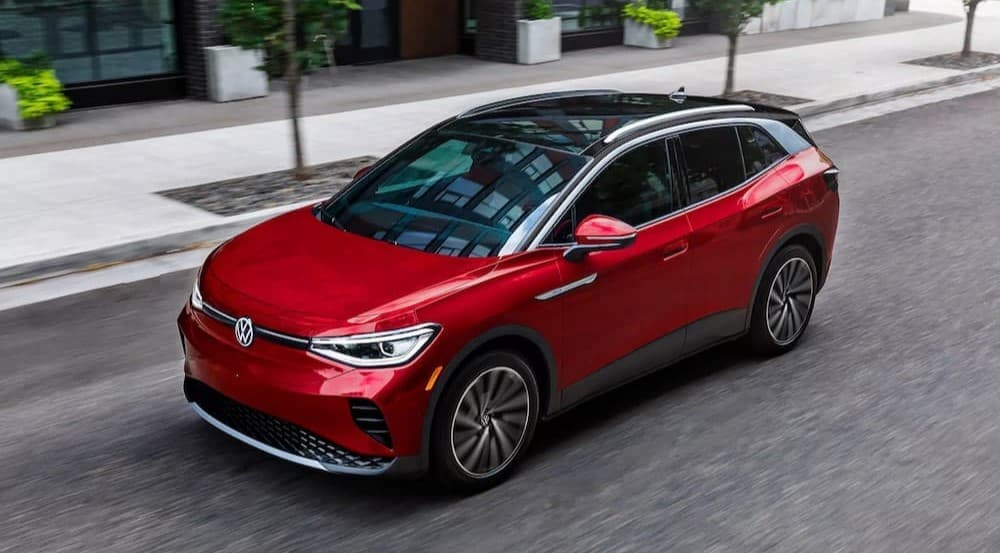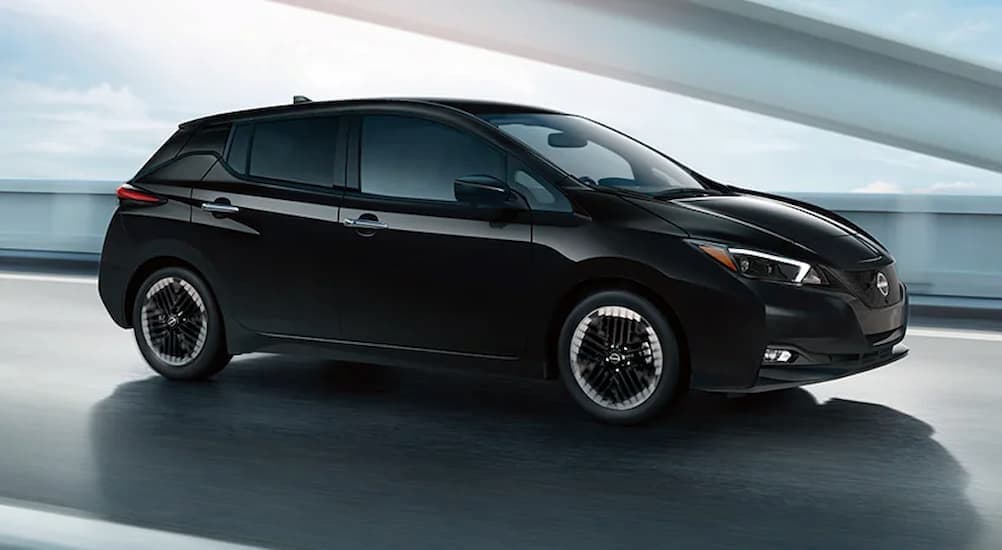That is a great question and one with a somewhat complicated answer. For one thing, that depends mainly on what a shopper’s budget looks like; what’s perfectly accessible for one person will be financially out of reach for another. That said, we can still look at the complete lineup of EV models and see that the hypothetical bell curve is weighted toward one end rather than the other. Some of this comes down to how innovative the technology going into EVs is and the fact that this makes them expensive to make and sell.
Of course, this argument would work much better if car companies were not posting massive profits in the last few years while focusing on their most-expensive and profitable vehicles over others that are more accessible. Right now, if you are shopping for an affordable EV, then the process can certainly be frustrating, but it is not entirely fruitless. Let’s have a look at the EV market in general, with an eye toward which models will give you the most bang for your buck, and talk about what the future holds for the vehicles that we’ll be shopping for in the years to come—because EVs aren’t going anywhere.

What Do EV Prices Look Like?
If we talk about affordable EVs, we need to start by looking at the EV market in general and what pricing looks like. There are dozens of different EV models out there, and pricing on them can range significantly; even looking at a single vehicle, you can find wide pricing swings depending on its battery and motor setup. So you will see an EV that looks quite affordable, but only if you get it with the standard battery that might have a shorter range than you want. Going with a version of it that meets your range of needs can push the price up quite considerably, and suddenly you are at a very different price point.
Looking at 2023 models, at the bottom end of EV pricing (for now) are the Chevy Bolt EV and Bolt EUV, coming in at $26,500 MSRP and $27,800 MSRP, respectively. The important thing about these two models, however, is that they both qualify for the full EV tax credit of up to $7,500; this can make their effective prices just $19,000 and $20,300, respectively. This tax credit is a crucial determining factor in EV affordability as long as you qualify. Still, it has some complicated stipulations that need to be met—more on that later.
Following these two Chevy models, the Nissan Leaf is an affordable option at $28,040, but it has about 100 miles lower range than the Bolt and Bolt EV at this price. Getting a Nissan Leaf with its available 60kWh battery (rather than the standard 40 kWh one) ups the range to above 200 miles and pushes the cost to over $36,000. The 2023 Volkswagen ID.4 (again standard range) starts at almost $39k, but with the tax credit, it comes down to an effective price of just over $31,000 MSRP, while the Hyundai Kona and Mazda MX-30 both fall in around the $34k range. You will also find VW ID.4 models with greater range at this point, though you can also get a standard-range version with excellent features around this price.
And at this point, we have entered the Tesla price point of hovering close to $40k. Of course, this is for the starting version of the Tesla Model 3, not something like the Model Y, though that does not start at too much higher a price. This low-mid $40k price point is a popular one right now, and if your budget goes somewhere around $45k, you will have a generous selection of different EVs to shop from. With this budget, you can look at a Ford Mustang Mach-E, Hyundai Ioniq 6, Kia EV6, and even some upgraded versions of the Tesla Model 3 or Model Y.

Let’s Talk Tax Credits
Fully exploring how the tax credit for EV models works would take too long, so we will stick to the basics. A couple of important things to note are that the maximum amount right now is $7,500 and that this is a tax credit, not a rebate or discount on the sale of a vehicle. You might see some car lots talk like it is a rebate—though they will be careful not to use that term—but it is a tax credit. It reduces your tax liability for the year when you buy an EV, which works like a refund from a particular perspective, but it is not a refund.
Some other countries make things easier—in Canada, for example, it is an actual rebate taken right off the price of an EV—but this is what we have. There are strict requirements that need to be met for a vehicle to qualify for this tax credit, notably the fact that the EV needs to undergo final assembly in North America. This is why the Nissan Leaf does not currently qualify for the tax credit, but the VW ID.4 does; VW ensures the final assembly takes place in North America. The EV also has to cost less than $80k if it is a van, SUV, or truck or less than $55k if it is a car or similar passenger vehicle.

What Does the Future Hold for EV Prices?
I’m no soothsayer or prognosticator, but I’ll do my best to make some predictions about what we can expect in the years to come. Right now, there is a clear good/bad news type of situation. The bad news is that Chevy is discontinuing the Bolt EV and EUV after the 2023 model year. I could say this is because they are shifting focus to other models, which is true, but it also comes down to the Bolt models not making enough profit for them. Fortunately, the Chevy Equinox EV should start around $30k, which is not too far from the Bolt EUV, but even with the tax credit, it will still effectively be priced at about $3k more than the current Bolt EV.
On the other side, the good news is that Ford recently announced a price cut on all F-150 Lightning models, which is terrific. Previously, the starting MSRP on the standard model had reached nearly $60k, while it is now down to just under $50k—yes, they dropped the price by basically $10,000. In fairness, when the F-150 Lightning launched, it had a starting MSRP of just $39,974, and Ford has increased the price four times in less than one year: first to $46,974 in August of 2022, then to $51,974 in October, then again to $55,974 in December, and once more to the previous $59,974 in March of this year. Four months after that, they dropped the price by a cool $10k, which does make me wonder what’s going on over there. This much uncertainty in just over a year is startling, but a downward trend is nice.
In the years to come, we can only hope that this is something we will continue to see as manufacturers lock down the technology they are using and offer more affordable options. GM spent tremendous time and money developing its Ultium EV platform for use by Chevy, GMC, Cadillac, and Buick models. Now, they can hopefully provide more options at various prices. We will have to see how it plays out, but something like the Equinox EV starting at $30k for its very-first year is a good sign. I would love to see a Malibu EV at an even lower price point, coming in at a price closer to the current Bolt EV, but I’m not in charge of that. In the meantime, be sure that any EV you are interested in qualifies for the credit—you can look up the VIN on an official IRS website—and shop carefully for your next ride.



